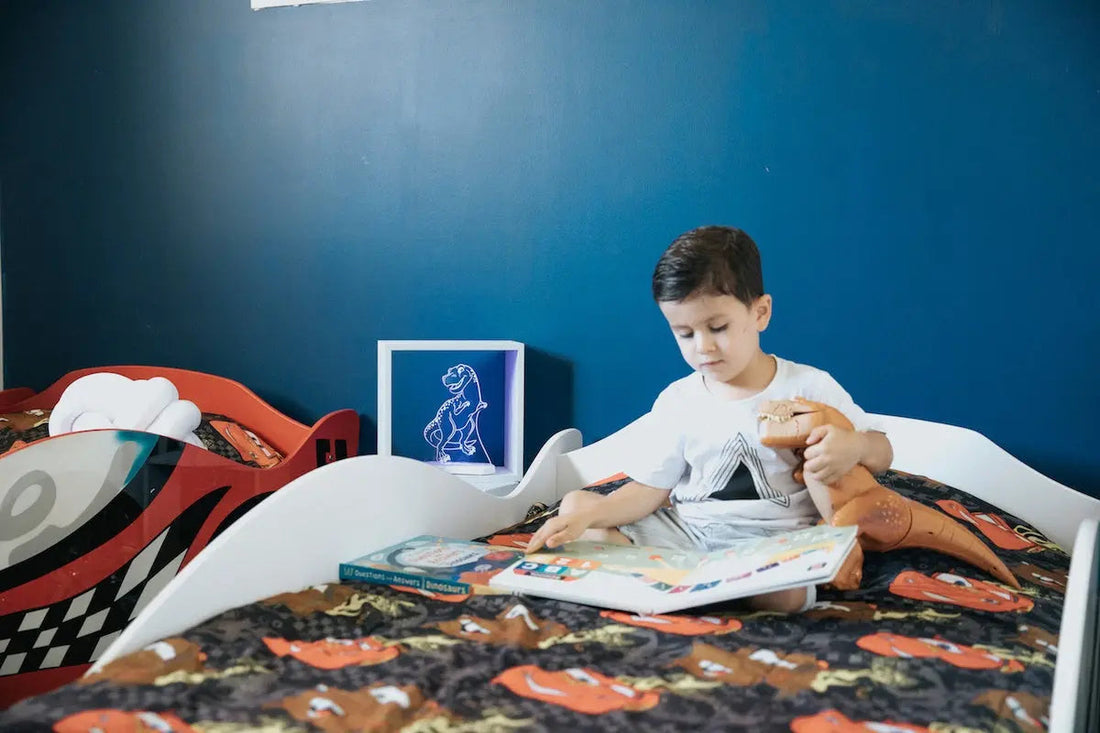How to Help Your Child Overcome Fear and Anxiety at Bedtime
Fear and anxiety are common in young children particularly from the age of two or three years old. It is around this time that a child’s imagination begins but they don’t have the ability or experience to reason out the difference between what is real and pretend.
Unlike adults, young children don’t have too many thoughts to preoccupy their minds before sleep so something they have seen or heard through the day can pop back in their mind and scare them. Especially if they hear noises or see shadows. Suddenly rustling leaves, a barking dog, or someone coming up the hall can be a monster in the mind of your child.
So how do you overcome bedtime battles and fears to ensure you and your child get a good night sleep? Here are our top six tips to soothe their fear of the dark (from parents who have been there too).
6 Effective Tips to Soothe Your Child’s Fear of the Dark
1. Reassurance
You can offer a lot of reassurance to your child by just acknowledging their fear. Remember that although it may sound silly to you, you have the life experience to know that the dark isn't scary. To your child, the dark is a real threat and can mask something even scarier.
If you can communicate with your child and validate how they feel even from a young age, they will trust you and be more likely to believe what you say. You will also teach them that fear is a valid emotion that they shouldn't feel ashamed or guilty over experiencing it.
2. Establish a Bedtime Routine
Keep in mind that fear is often brought about by change and uncertainty. Kids (and us adults for that matter) love boundaries and consistency—it helps them to feel safe and secure. That is why it is so important to establish a routine and keep bedtime as predictable as possible.
For young children being sent off to bed alone can be daunting. But when they have mum or dad read them a story and sing them a song after tucking them in, bedtime seems a lot easier.
That's not to say that has to be your bedtime routine, you need to find out what works for your child and gives them the security and reassurance they need.
3. Watch What They’re Watching
Television and movies can be one of the most common ways children are scared. Young children struggle to differentiate between reality and fantasy so that violent clip on the news, scary theme in the cartoon or supernatural movie scene can seem a threat to them when the lights go out.
While you can’t always control what your child sees on TV or in movies, there are some ways you can help minimise your child’s exposure to potential scary themes that can come back to bite you later.
Before going to the movies watch the trailer, check out the reviews, and ask other parents who have seen it what they thought.
If you know you aren't going to be able to keep a close eye out when shows change, consider popping in a suitable DVD they love.
4. Choose Bedtime Books Carefully
When choosing the book to read at bedtime keep in mind that this will be the last bit of information that enters your child's mind before they sleep.
If there are monsters, witches, dragons, lost children, or other potential scary characters, you may want to put that aside. All these images get processed in their mind, and as soon as the lights go out, those images become real.
5. Empower Your Child
One of the best ways to help your child with any fear even from a young age is to help them be empowered. Involve your child by asking them what would help them to stop feeling scared - and what they could do to make the fear go away.
Let them tell you what they need to feel safe. You may need to get a broom and chase the monsters out from under the bed, check the cupboards, or fetch them their favourite toy or blanket. This will teach your child that they have control and power over their fears and anxieties.
6. Use a Night Light
Everything seems scarier in the dark. A night light can be a quick and easy solution to show them there is nothing to be afraid of. Pretty to look at, a night light can help ease bedtime stress and soothe them into a deep, calming sleep.
Final Thoughts
Do you have any bedtime tricks to relieve fears? Share your tips and help other parents ease their children’s bedtime anxiety!



